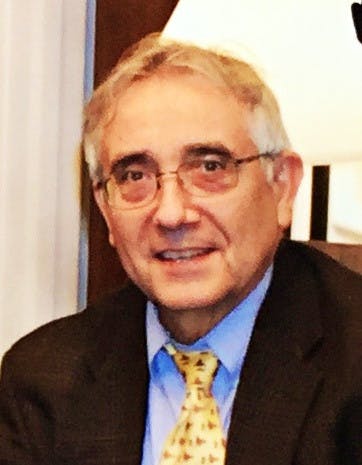A student of philosophy, 1974 MSU alumnus Tim Richardson’s personal philosophy of self-fulfillment and the pursuit of internal satisfaction has shaped and guided his life and career.
From a small rural town of Chesaning, Michigan, Richardson said he is the only person to work restoration on the aftermath of both the Deepwater Horizon and Exxon Valdez oil spills, the two largest in United States history.
But that's now how it started. Thinking that teaching was the best route for him after graduation, Richardson had secured a teaching assistantship in Ohio.
“I lived in the sticks, you could say,” Richardson said. “People were farmers, they were auto plant workers, they were teachers or any number of service industries.”
But after three years, he wasn’t enjoying academic life. This, as well as a lack of jobs, pushed him to pursue something else.
He moved to Texas in 1979 and began doing freelance work for local newspapers, and in 1983, he started his own political newsletter called the "Quorum Report" while his wife worked and went to school.
“It wasn’t a wealthy existence, but it was freedom and exciting,” Richardson said.
Five years later, in 1988, Richardson was hired to work on former Democratic Sen. Lloyd Bentsen’s reelection newsletter. After Bentsen was selected as running mate to Democratic presidential nominee Michael Dukakis, Richardson suddenly found himself involved in high-level politics. In 1989, he became chief of staff to Democratic Congressman Greg Laughlin. It was here that Richardson came to work on the Exxon Valdez spill.
The spill happened in 1989, when the Exxon Valdez oil tanker struck Bligh Reef, tearing open the ship's hull and releasing about 11 million gallons of oil into the water. It was the worst oil spill in history. Laughlin had oversight on the spill, and Richardson went to work as a consultant for small native corporations and tribes.
“I traveled to Alaska ... and met native corporations who were on Kodiak Island,” Richardson said. “They were in the path of the spill, and I went to work for them.”
The spill had caused a considerable amount of damage to humans and the natural environment. Richardson worked with the team to repair this damage while helping communicate between the natives, the government, their lawyers and the media.
Richardson described his work as a consultant as similar to running a presidential campaign.
"I would go out and get positive name ID’s for the bear-native dilemma and Kodiak Island,” he said.
According to Richardson, he would find a variety of angles on the same issue in order to garner as much interest in an issue as possible.
He described this approach as like a wheel with spokes. The center of the wheel is the central issue — like the oil spill in Alaska — and each spoke is an audience that has a different reason to care about the issue.
Richardson's experiences working in Alaska led him to publish a book titled "Kodiak Bears and the Exxon Valdez."
He did similar work when the Deepwater Horizon spill occurred.
The Deepwater Horizon oil rig exploded in 2010, killing 11 people and leaking over 205 million gallons of oil into the Gulf of Mexico, passing the Exxon Valdez spill as the worst in U.S. history. Richardson helped coastal counties in Texas reach a settlement.
Now, Richardson works as a multi-client consultant for similar conservation issues. Currently, he is working to repair a 140,000 acre marshland located on a beach in Jefferson County, Texas.
Richardson said that the tall grasses in the marshland can reduce the storm surge of a hurricane as it hits, making them an important asset to Jefferson County.
Support student media!
Please consider donating to The State News and help fund the future of journalism.
“This summer, we're going to be rebuilding the beach," he said. "... It's probably the biggest beach nourishment project in the United States."
Richardson regards his career path as proof that people interested in the liberal arts can still carve out a successful existence for themselves. His background in philosophy and experience writing about it enabled him to work in journalism, and it also prepared him to work in conservation, what he considers a highly ethical enterprise.
Richardson suggests that young people should look for a place that needs them.
"You might have to look at the country," he said. "Where is a place that needs young people?"
Much of Richardson’s career approach is based in philosophy.
Richardson’s personal philosophy is informed, in part, by the idea that people should be able to marvel at themselves, to be pursuing something immaterial in life that gives them personal satisfaction.
“You got to have the material, got to have food, clothing, shelter, you got to have an ecology that doesn't kill you, but it's this interior life, that is where the gold is,” Richardson said.
Discussion
Share and discuss “MSU alumnus worked consulting on 2 biggest oil spills in US history” on social media.







